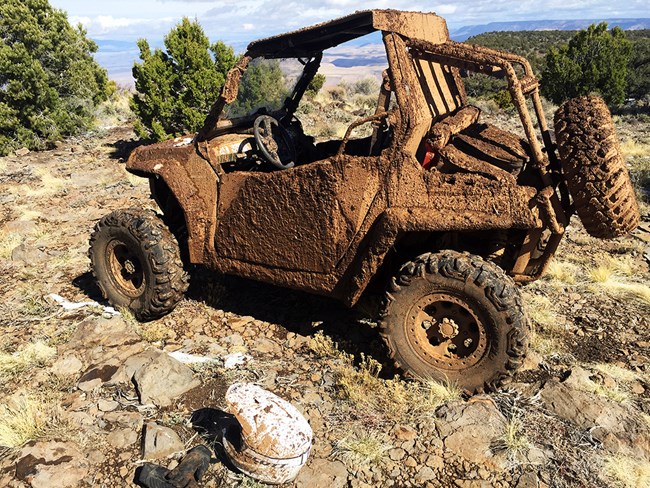Off-Road Driving
Driving is permitted on the official unpaved roads in the monument. Travel off of established roads is not permitted.
If you drive an ATV or UTV, before proceeding, please see the registration requirements for your state.
For motorists who bring a pickup or SUV to explore Parashant, the monument offers a variety of easy to challenging roads. 10 ply tires (load range E) are the strongest. Lower load range tires are more susceptible to puncture or sidewall tearing on the rocky roads. Two spare tires, not just one, are recommended. Tow bills off the monument exceed $1,000.
Some roads are well maintained gravel. Others are rugged such as long stretches of sharp volcanic rock on the way to Whitmore Canyon, or rough cobbles and bedrock on the road out to Twin Point, or deep sand in the Grand Wash. Road sections with a base of clay are impassible when wet, even with mud tires. Vehicles cannot cause roadbed damage such as making ruts when roads are wet.
Roads cross and recross washes multiple times. If a wash has run from a recent storm, it will have sharp banks that longer vehicles can high center on. Bring a shovel to take the edge off sand and gravel banks in washes where the road exits the wash if necessary.
Never park or camp in a dry wash. Some flash floods can take many hours after a storm to reach the area you are in.

